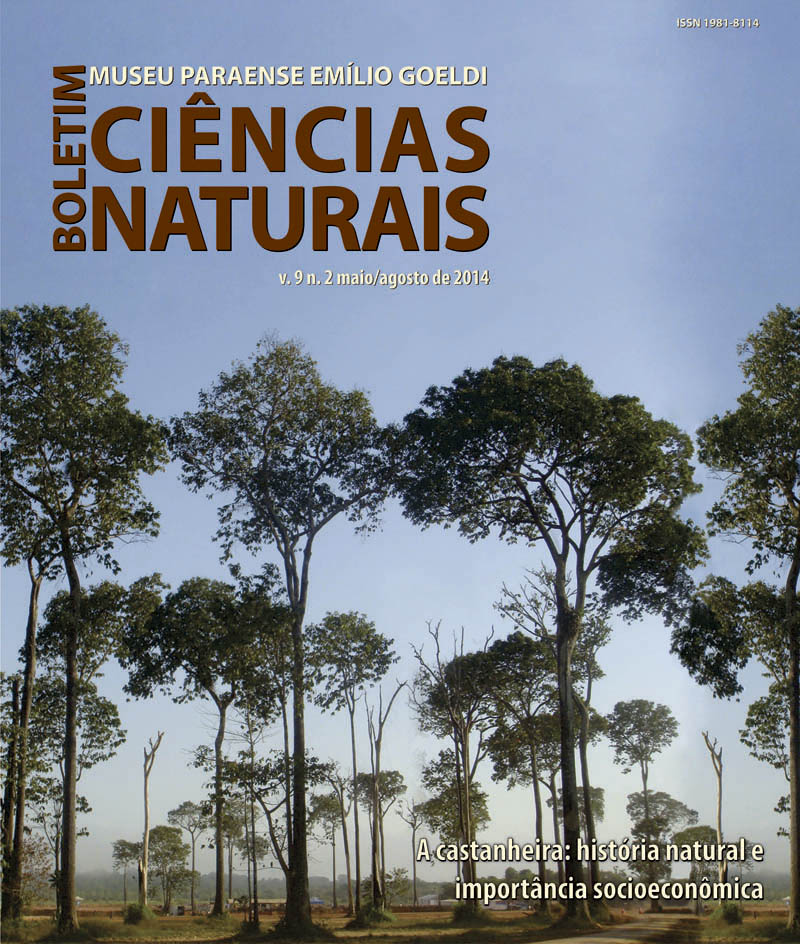Performance and survival of Brazil nut tree (Bertholletia excelsa Bonpl., Lecythidaceae), in different light conditions after six years to planting, in Trombetas River region, Oriximiná, Pará, Brazil
DOI:
https://doi.org/10.46357/bcnaturais.v9i2.528Keywords:
Dendrometry, Silviculture, Light, Regrowth, FireAbstract
This study assesses the performance and survival of Brazil nut tree (Bertholletia excelsa Bonpl., Lecythidaceae) in different conditions and levels of ambient light: within experimental plantations in the Trombetas River region (Oriximiná, Pará). Three natural incident light treatments: manioc field (100% canopy removal), young secondary forest (20-80% canopy cover) and the understory of a Brazil nut stands (< 10% canopy opening), with four replicates, were used in the experiment. For six years, plant height and stem diameter were measured, and mortality and regrowth were recorded. The Brazil nut plants of the manioc field had greatest growth (height and diameter) than other two treatments. The survival of plants rate varied according to the treatment: manioc field (90%), young secondary forest (77%) and understory of the forest (21%). The regrowth capacity was very high in the manioc field, recovering strongly after incidents of fire and with the majority exhibiting the regeneration of more than one emergent stalk. Overall we report that the performance of juvenile Brazil nut trees is dependent on ambient light, with higher survival in conditions of high light exposure and a higher level of regrowth after disturbance by fire.
Downloads
Published
Issue
Section
License
Publication means fully assigning and transferring all copyrights of the manuscript to the journal. The Liability Statement and
Assignment of Copyrights will be enclosed with the notice of acceptance. All the authors must sign the document and return it to the journal.








